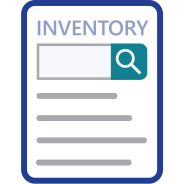
Choose from 5 options:
We monitor introducer compliance across each introduction category. With our compliance monitoring activities, we aim to protect human health and the environment (the primary objective of our regulatory scheme) without imposing an unnecessary burden on regulated entities.
The objectives of our monitoring activities are to:
We use a risk-based approach and focus on introducers at higher risk of non-compliance as well as introductions that pose a higher risk to human health and the environment. We also modify our monitoring activities to accommodate emerging risks.
Learn more about how we work with introducers / regulated entities
We continually evaluate compliance risks when planning and carrying out compliance monitoring activities. We monitor these compliance risks associated with our laws about introducers of industrial chemicals:
To help inform our monitoring activities, we assess a regulated entity's compliance risk against obligations with our laws. The risk indicators may have a positive or negative effect on the introducer’s final risk rating.
Our focus is on regulated entities we assess as being a higher relative risk of non-compliance. These entities will be subject to more regular and detailed monitoring to encourage compliance.
For example, a business with a history of non-compliance under AICIS or our previous scheme (NICNAS) is deemed to be a higher risk and we are likely to monitor their compliance more closely than a business with a good compliance history.
We monitor compliance across a proportion of all categories. We present our findings to an introducer so they can respond before we finalise the outcome. We advise all introducers of the final outcome.
A listed introduction is the introduction of a chemical on the Inventory (industrial chemicals database). Chemicals on the Inventory are available for industrial use in Australia, provided an introducer can meet terms and conditions we set (if any).
We check that:
An exempted introduction is where the risk of the introduction to both human health and the environment is very low.
We check that the introducer can provide a list of their exempted chemical introductions and records of the information they used for categorisation.
A reported introduction is where the risk to both human health and the environment is low.
We give priority to introductions that we consider to pose a higher risk based on the information given in the pre-introduction report. We will also select a proportion of reported introductions that we believe may present a higher risk of non-compliance.
We use the information given in the pre-introduction report and any other information we have to validate the reported categorisation.
An assessed introduction is where the highest indicative risk of an introduction to human health or the environment is medium to high.
A commercial evaluation authorisation (CEA) is a time-limited authorisation we can grant for the purpose of testing a chemical's commercial viability in Australia.
Introduction terms on a certificate or a CEA mainly inform our monitoring work. We generally focus on introductions of particular concern and may also consider an introducer’s compliance history.
The main purpose of our monitoring is to check that an introducer is meeting their reporting obligations and the terms of their certificate or CEA.
All instances of non-compliance we identify will be referred for case management as an apparent contravention of the Industrial Chemicals Act 2019.
Learn about our compliance and enforcement powers
We regularly evaluate our compliance monitoring work for efficiency and effectiveness.
We report on our compliance monitoring activities as part of the Department of Health and Aged Care's Annual report.
We follow a set of principles and aim to minimise impact on introducers.